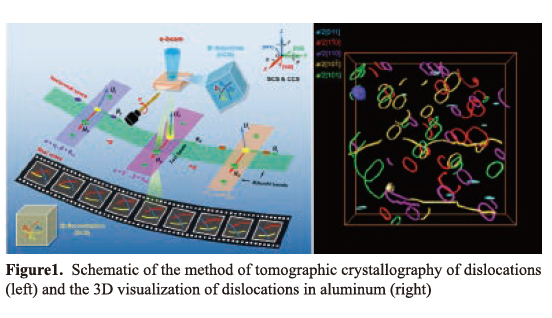Zongqiang Feng1*, Andrew Godfrey2, Guilin Wu2, Xiaoxu Huang2
1College of Materials Science and Engineering, Chongqing University, Chongqing 400044, China
2School of Material Science and Engineering, Tsinghua University, Beijing 100084, China
3Beijing Advanced Innovation Center for Materials Genome Engineering, University of Science and Technology Beijing, Beijing 100083, China
EXTENDED ABSTRACT: Dislocation is one of the most important genes in tailoring the microstructure and properties of materials. The comprehensive high throughput characterization of these parameters is the basis for fully understanding the phase transformation and deformation behaviors as well as the performance of materials. We developed a high throughput three-dimensional (3D) characterization technique for dislocations [1], which enables high-throughput and integrated characterization of dislocation geometry and crystallography in 3D. This technique is applied to characterize various dislocation structures in quenched and deformed aluminum alloys. The obtained information on geometric and crystallographic characteristics of dislocations provides strong support for understanding the formation and evolution mechanisms of dislocations.
Keywords: Dislocations; Transmission electron microscopy; Electron tomography; High throughput characterization; REFERENCES
[l] Z. Q. Feng, et al. Curr Opin Solid State Mater Sci, 24 (2020) 100833.


Zongqiang Feng received his Ph.D. from Northwestern Polytechnic University and is now an associate professor at Chongqing University. His research interests are the developments of high performance nanometals and the advanced 3D characterization technique for dislocations. He has published more than 40 papers in academic journals including Nature and Acta Materialia, etc.